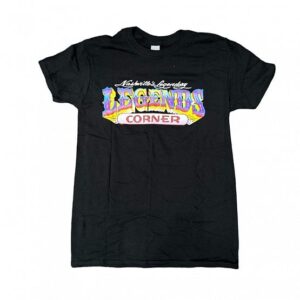What is a T-shirt made of?

A t-shirt, a staple in almost everyone’s wardrobe, is more than just a simple piece of clothing. At its core, it’s a canvas that tells a story of its composition. Typically made from cotton, a natural fiber harvested from the cotton plant, t-shirts are known for their softness and breathability. Over the years, other materials like polyester, rayon, and blends have also been introduced to enhance durability, stretch, and other desired characteristics. Let’s delve deeper into the fabric of this iconic garment and understand what truly goes into making a t-shirt.
Historical Evolution of T-shirt Materials
Initially crafted from wool or silk, it transitioned to more breathable cotton in the 19th century, offering comfort and affordability. The 20th century saw the introduction of synthetic fibers like polyester, enhancing durability and allowing for diverse blends. Today, with sustainability in focus, organic cotton, bamboo, and recycled materials are gaining popularity.
What is the Process of Making a T-shirt?
It begins with sourcing raw materials, predominantly cotton, which is then spun into yarn. This yarn is woven or knitted to form soft fabric sheets. After dyeing to the desired color, the fabric is cut into t-shirt patterns. These pieces are then sewn together, forming the basic structure. The necklines, hems, and sleeves are finely stitched for durability. Finally, designs or prints are added, if desired, through screen printing or digital methods. Once quality-checked, the t-shirt is ready to wear, a product of meticulous craftsmanship and modern machinery.
What is the Raw Material of the T-shirt?
The primary raw material for t-shirts is cotton, a soft, fluffy staple fiber that grows in a protective case around the seeds of cotton plants. Revered for its breathable and absorbent qualities, cotton provides the comfort and softness that t-shirt wearers love. While cotton remains dominant, other materials like polyester, a synthetic fiber, are also used either alone or blended with cotton to enhance certain characteristics. In recent times, sustainable alternatives like bamboo and organic cotton have gained traction, reflecting a growing consciousness towards eco-friendly fashion. Each material brings its unique touch, shaping the t-shirt’s feel and function.
Which Has Highest-quality T-shirt Material Made of?
Egyptian cotton stands out as the gold standard, renowned for its long fibers that produce silky, durable fabrics. Pima cotton, with its softness and brilliance, is another top contender. For those seeking wrinkle resistance and durability, a blend of cotton and polyester might be preferred. Meanwhile, luxury seekers might gravitate towards cashmere or silk shirts, prized for their opulence and sheen. Ultimately, the best material balances comfort, durability, and aesthetics, tailored to the wearer’s needs and desires.

The Legends Corner is synonymous with top-tier t-shirt craftsmanship. Dedicated to honoring music’s greats, they don’t compromise on quality. Each country music apparel t-shirt is meticulously crafted from premium materials, ensuring softness, durability, and a comfortable fit. The music designs, inspired by musical legends, are printed with precision, ensuring they remain vibrant and intact even after multiple washes. It’s not just about aesthetics; it’s about wearing a piece that feels luxurious and lasts.
The Legends Corner is more than just a t-shirt; it’s a tribute to musical icons. This apparel line celebrates the legends of music, encapsulating their spirit and legacy on fabric. Each t-shirt, crafted with care, showcases distinctive designs inspired by iconic album covers, memorable lyrics, or the artists themselves. Wearing a “The Legends Corner” tee is like wearing a piece of music history, resonating with the passion and soul of legendary musicians. Whether you’re a rock enthusiast, a jazz aficionado, or a pop lover, there’s a T – shirt that speaks to your musical heart, making it a must-have for every music devotee.
What is GSM in Fabric?
GSM, or “grams per square meter,” is a crucial metric in the textile industry, denoting the weight of a fabric. It measures the mass of a fabric in grams over a one-meter by one-meter area. A higher GSM indicates a denser, heavier fabric, often equating to better durability and warmth. Conversely, a lower GSM suggests a lighter, more breathable material. For instance, summer t-shirts might have a GSM of around 120-150, while cozy sweatshirts could range upwards of 300 GSM. Understanding GSM helps consumers gauge the thickness, warmth, and durability of a fabric, making informed choices in their purchases.
What Fibre is a T-shirt Made of?
T-shirts isn’t limited to just cotton. Many modern tees incorporate synthetic fibres like polyester for added durability and elasticity. Blends of cotton and rayon or bamboo are also popular, offering a silky texture and moisture-wicking properties. As sustainability gains momentum, organic cotton and recycled fibres are emerging as eco-friendly alternatives, reshaping the fabric landscape of t-shirts.

